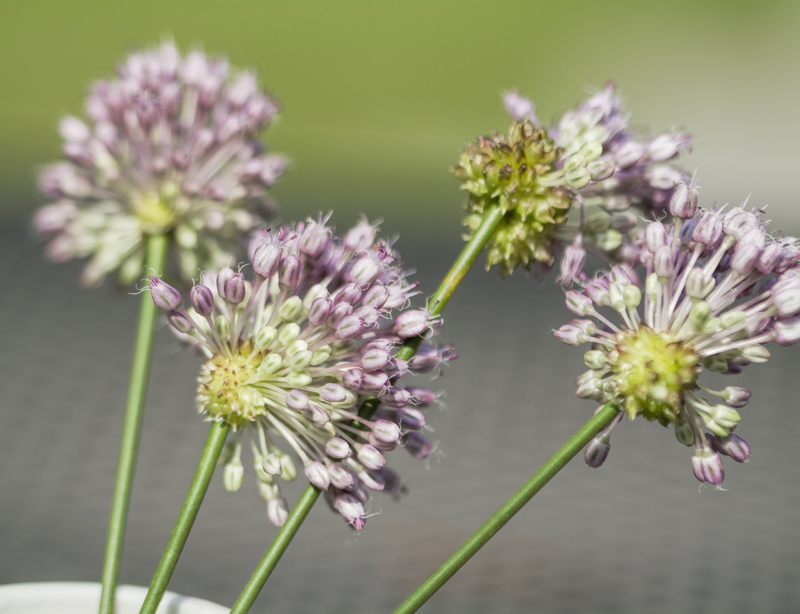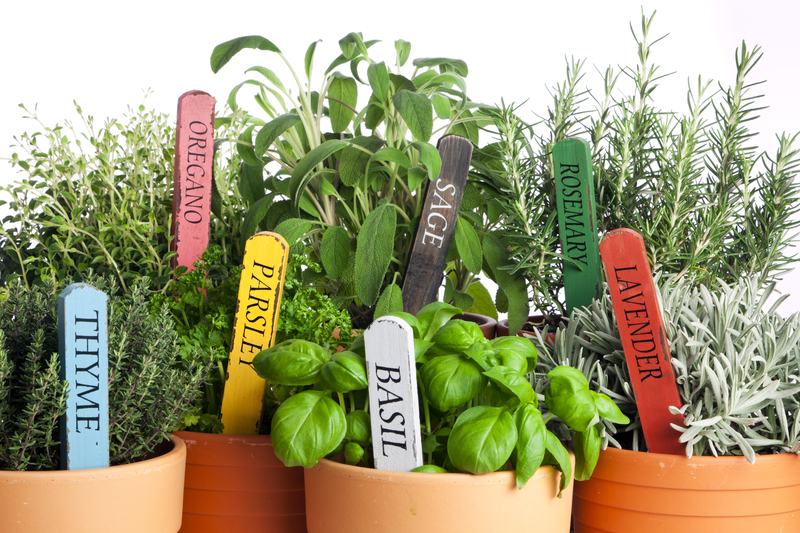Wave Goodbye to Weeds with These 3 Strategic Tips
Posted on 14/08/2025
Wave Goodbye to Weeds with These 3 Strategic Tips
Tired of battling relentless weeds in your garden or yard? Every gardener and homeowner knows the frustration: no matter how much you pull, burn, or spray, weeds seem to reappear as if by magic. But what if you could wave goodbye to weeds for good with some clever, strategic approaches? This comprehensive guide dives deep into three proven, science-backed weed control methods that transform your lawn, flower beds, and vegetable patches into vibrant, weed-free sanctuaries. Follow these tips to reduce weed infestations and save yourself precious time and hard-earned money.
Why Persistent Weeds Are More Than Just a Nuisance
Before exploring the top weed management strategies, it's essential to understand why weeds are not merely eyesores but genuine threats:
- Weeds compete for nutrients, water, and light, robbing your cherished plants of what they need most.
- Many weeds attract pests and diseases that can harm your garden's health.
- Invasive weeds can spread rapidly, overtaking lawns, crops, and flowerbeds.
- Unwanted plants can lower property values and reduce curb appeal.
With this in mind, let's take action and wave goodbye to those persistent weeds--the smart way!

Strategic Tip #1: Use Mulch to Suppress and Block Weeds
What Makes Mulch a Weed's Worst Enemy?
Mulching is not just a decorative afterthought; it's a powerfully effective weed control strategy. By covering soil with organic or inorganic materials, mulch blocks sunlight and creates a physical barrier, preventing weed seeds from germinating. Plus, it holds moisture, enriches soil, and even regulates temperature. Talk about multitasking!
- Organic mulch (like shredded bark, straw, wood chips, leaves): Enriches soil as it decomposes, creates a loose layer for roots, and effectively blocks emerging weeds.
- Inorganic mulch (such as landscape fabric, black plastic, stones): Forms a durable barrier, lasting longer and requiring less frequent replacement, ideal for landscaping and pathways.
How to Mulch Like a Pro
To maximize weed prevention with mulch, follow these step-by-step tips:
- Start with a clean slate: First, remove existing weeds manually or with a hoe.
- Lay down landscape fabric (optional): For added defense, roll out a weed barrier before mulching. Just remember to cut holes where your plants and shrubs will grow.
- Apply a 2- to 4-inch layer: Spread mulch evenly around your garden beds or between rows in your vegetable patch, ensuring it thoroughly covers exposed soil.
- Keep mulch away from plant stems: Give your plants about an inch of breathing room to prevent rot and disease.
- Replenish mulch annually: Top up areas where mulch has thinned to maintain its weed-blocking power.
Pro Tip: If you're using grass clippings or leaves as mulch, make sure they're free of weed seeds to avoid introducing new problems.
Strategic Tip #2: Crowd Out Weeds with Dense, Healthy Plant Growth
The Power of Competition: Outplanting Weeds
The best defense is a good offense. Healthy, well-established lawns and garden beds leave little room for weeds to invade. By selecting vigorous plants and planting them close together, you create competition for sunlight, nutrients, and moisture. As weeds need these resources to thrive, a dense cover of desired plants suffocates and inhibits their unwelcome growth.
How to Design a Weed-Resistant Garden
- Choose the right ground covers: Opt for low-growing, fast-spreading species like creeping thyme, ajuga, or pachysandra. These serve as living mulches by shading soil and stopping weed seeds from germinating.
- Mind the gaps: When planting flowers, vegetables, or shrubs, minimize empty areas between specimens. Use mature plant sizes as your spacing guide, not seedlings.
- Mow and edge regularly: A healthy, high-cut lawn (about 3") keeps grass thick and dense, making it difficult for weeds like crabgrass and dandelion to take hold.
- Feed your plants: Ample water and fertilizer help your desired species establish quickly and efficiently outcompete weed seedlings.
- Rotate crops: In edible gardens, crop rotation prevents the buildup of weeds (and pests!) that favor particular plant families, ensuring a more resilient space.
Interesting Fact: Certain ground covers--like clover--also fix nitrogen in the soil, benefiting neighboring crops and naturalizing your yard against invaders.
Strategic Tip #3: Target Problem Weeds with Smart, Timely Interventions
Precision Attacks: Manual, Mechanical, and Safe Chemical Control
No matter how diligent you are, some tough weeds can slip through even the coolest, thickest mulch or the healthiest, most crowded plantings. For these stubborn interlopers, targeted action is necessary. Here's how the pros wave goodbye to weeds at the source:
- Hand pulling: Uproot annual weeds entirely, making sure to get all roots of perennials like dandelion, bindweed, and thistle. Do this after rain or watering when the soil is soft for easier removal.
- Hoeing and cultivating: Shallowly disturbing (about 1 inch) the soil slices weeds off at ground level. Best to hoe weeds while they are small and before they seed.
- Flame weeders: For driveways, walkways, or gravel areas, a flame weeder quickly scorches weeds without chemicals, causing cell walls to rupture and killing them down to the root in some cases.
- Organic herbicides: Vinegar-based sprays, clove oil, or citrus-based weed killers are safer alternatives that dehydrate and damage weed tissue on contact. They work best for young, leafy weeds rather than established perennials.
Timing Is Everything: Strike Early for Best Results
Most weeds go to seed incredibly fast. One dandelion can produce thousands of airborne seeds, and annual weeds often sprout, flower, and seed in just weeks. The key to effective control is early action. Make a habit of weekly walks through your garden--removing baby weeds before they mature and multiply. Persistence pays off!
The 3 Strategic Tips Recap: Your Weed-Free Action Checklist
- Suppress weeds with a thick mulch layer to block sunlight and smother seeds.
- Crowd out invaders by tightly planting healthy, competitive ground covers, lawns, and crops.
- Target persistent weeds early with timely hand-pulling, hoeing, flaming, or safe organic spot treatments.
Combine all three approaches for ironclad, long-term weed suppression--and finally enjoy a lush, low-maintenance garden or yard!
Beyond the Basics: Expert Tips to Wave Goodbye to Weeds
Soil Health and pH: The Root of Many Weed Problems
Healthy, balanced soil supports robust plants and discourages weed growth. Test your soil regularly for pH and nutrient content. Grass, for instance, thrives in slightly acidic soil, while many weeds prefer extremes (very acidic or alkaline conditions). Adjusting your soil with lime or compost can further tip the scales against unwanted weeds.
Water Wisely
- Drip irrigation: Deliver water directly to the roots of your plants, not the entire soil surface. This keeps surrounding areas dry and less hospitable for weed growth.
- Water early in the morning: This helps your plants utilize moisture efficiently, minimizing wetness for weed seeds to sprout overnight.
Keep Tools Clean
- Always clean your hoes, trowels, and mower blades after each use. Prevent the spread of weed seeds from one bed to another.
Common Weed Myths and Mistakes to Avoid
- "If I pull the leaves, it's gone." Many perennial weeds regrow from roots. Get the whole plant or treat root fragments.
- "All mulch works the same." Thin or low-quality mulch may contain weed seeds or decompose too quickly, letting light reach the soil.
- "Weeds are all bad." Some weeds actually improve soil health by breaking up hardpan or attracting pollinators. Identify and selectively manage them.
- "I'll spray all weeds at once." Non-selective chemical herbicides can harm desired plants, pollinators, and soil life. Spot-treat responsibly, or opt for targeted organic solutions.
Frequently Asked Questions: Wave Goodbye to Weeds
How often should I mulch to prevent weeds?
Annually is a good rule of thumb for organic mulch. Inorganic mulches last longer but may need occasional cleaning and repositioning. Inspect throughout the growing season and replenish any thin, bare spots.
What's the most eco-friendly way to control weeds?
Combining manual removal, dense plantings, and organic mulching is safe for kids, pets, and pollinators. Limit chemical use, avoid pre-emergent herbicides unless necessary, and always follow product guidelines.
Should I use landscape fabric under mulch?
Landscape fabric can help in ornamental beds but may strangle roots or inhibit soil health if overused. Avoid it in vegetable gardens and consider more eco-friendly barriers like newspaper or cardboard for weed control.
Can I compost garden weeds?
If the weeds are young and have not gone to seed, yes. Avoid composting aggressive perennial weeds or anything with mature seeds, as these can survive the composting process and reinfest your garden.

Conclusion: Achieve a Weed-Free Garden with Simple, Strategic Actions
It's time to wave goodbye to weeds and reclaim your green spaces! By using mulch, planting densely, and targeting persistent weeds at the right time, you build robust defenses that nurture your desired plants and block out unwelcome guests. Supplement your game plan with good soil management and ongoing maintenance, and soon your landscape will flourish without a weed in sight.
Take these tips to your garden today, and enjoy beautiful, thriving spaces for years to come!
More Tips & Resources to Wave Goodbye to Weeds
- Learn to identify local weed species via regional garden networks or extension services.
- Invest in ergonomic weeding tools for larger plots or tough, established weeds.
- Join community gardening groups for advice, mulch swaps, and shared equipment.
- Document your weed control progress with photos or a journal to refine your approach season by season.
Say farewell to garden frustration--and watch your healthy, weed-free sanctuary come to life!

